Table of Contents[Hide][Show]
If you are going to be flying Air Canada, they have very specific guidelines for carry-on sizes, liquids, and other unique items that you may want to bring on board. This article will explain everything you need to know about Air Canada’s carry-on policy.
Air Canada Carry-On Policy
Air Canada allows one carry-on bag and one personal item onboard at no charge. They refer to the carry-on bag as a ”standard article” and the personal item as a “personal article”.
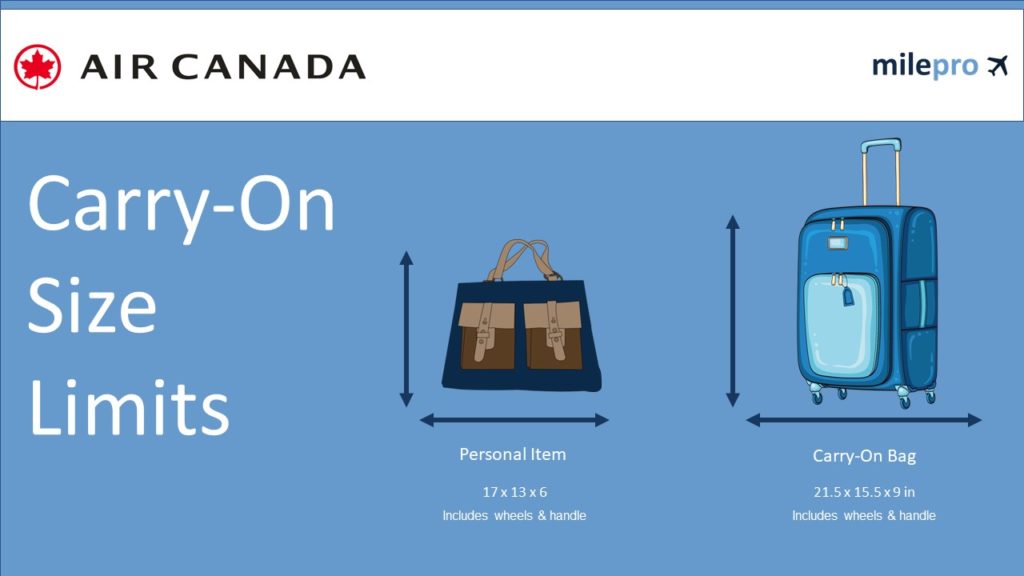
Air Canada Airlines Carry-On Size (Dimensions)
Air Canada’s size requirements for a carry-on are 21.5″ x 15.5″ x 9″ (55cm x 40cm x 23cm).
If you aren’t sure what size your carry-on is, Air Canada provides size check templates located at their ticket counters and gates. But by the time you get to either of these locations, it’s too late if the bag is too big, so better to always know your bag size in advance.
Air Canada is very strict about carry on size limits, so double check to make sure you are in compliance!
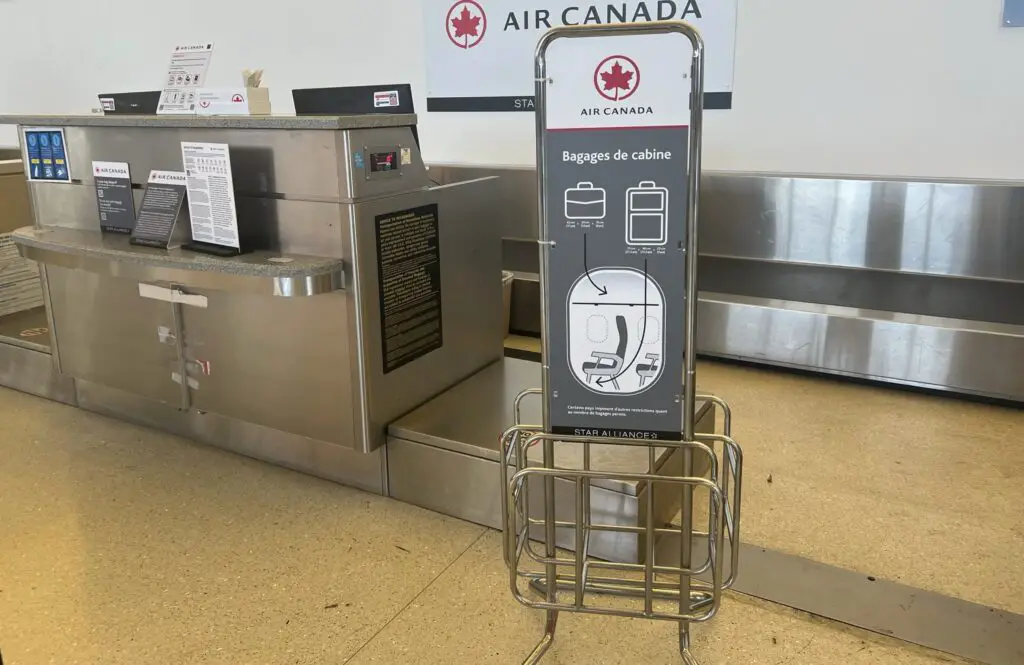
Most full service airlines like Delta, United and American do not have bag sizers at the gate. Air Canada does, which confirms how strict they are about the size of your carry on.
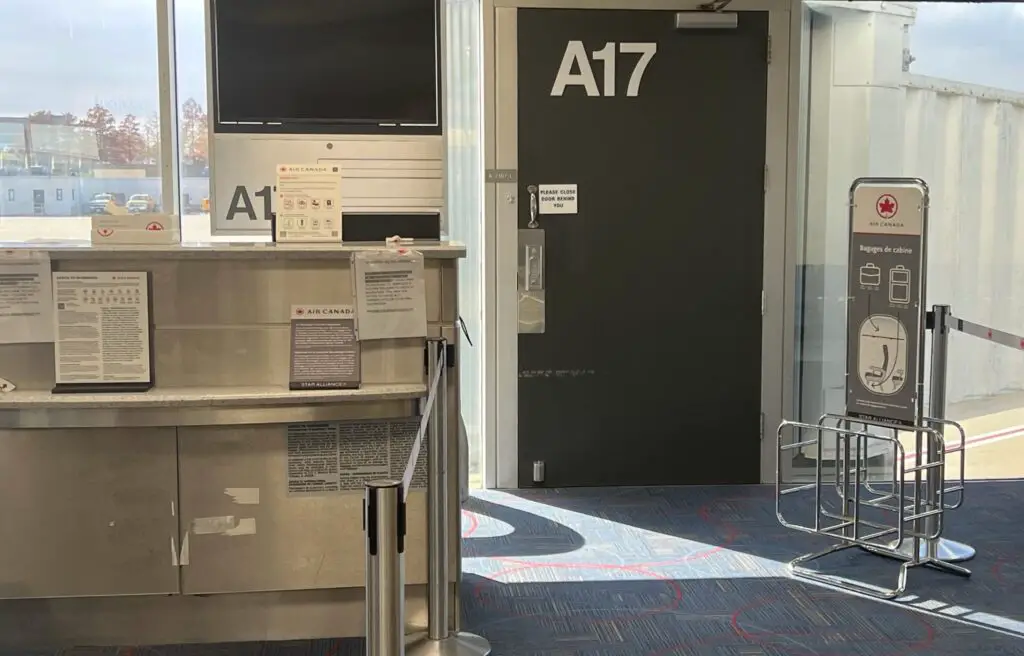
Automated carry-on baggage sizers
Air Canada recently introduced automated carry-on baggage sizers pre-security in the Montreal (YUL), Toronto (YYZ), and Vancouver (YVR) airports.
These new, touchless machines are easier and faster to use than metal sizers. If you are at one of these airports, make sure that your carry-on bag complies with the sizing outlined above to avoid having to check your carry-on bag at the gate.
Air Canada Airlines Personal Item Size
In addition to a carry-on bag, Air Canada allows each passenger to bring one personal item onboard. Personal items include purses, briefcases, cameras, food containers, or laptops (case included).
Your personal item must be stored under the seat in front of you.
Air Canada Carry-On Weight Limit
As a rule, Air Canada doesn’t impose weight restrictions on a carry-on bag. The only rule they have is that it must be light enough that you can store it in the overhead bin unassisted.
Recommended Carry-On Bag for Air Canada
If you are looking for a great carry-on bag when flying Air Canada, I recommend the Travelpro Maxlite 5 Expandable Spinner. I have used this carry-on for years. It’s durable, reasonably priced, and holds everything I need for shorter trips. Plus the spinner wheels make it very easy to get through the airport quickly.
Air Canada Baggage Fees (Checked Baggage)
If you have to check a bag on Air Canada, there are some size and weight rules to be aware of.
All checked bags must adhere to a maximum weight of 50 pounds (23 kg) in economy class or 70 pounds (32 kg) in business class, with maximum linear dimensions of 62 linear inches (158 cm).
Premium Economy, Premium Rogue, and business class each have 2 bags included.
Use the Air Canada checked baggage calculator to determine your free checked baggage allowance, and any additional fees should you exceed it.
Air Canada Carry-On Liquids Policy
The rules for carry-on liquids are set by the CATSA (Canadian Air Transport Security Authority), not by the airline. Air Canada doesn’t have their own specific Liquids Policy, they just enforce the rules and policies of the TSA.
However, here are some tips Air Canada specifically provides regarding liquids and liquid size limits:
- If you travel with liquids or gels in containers over 100mL/100g (3.4oz) in your carry-on baggage you will have these items confiscated at the security checkpoint.
- If you have a connecting flight you’re advised not to purchase liquids or gels in containers over 100 mL / 100 g (3.4 oz) within the secure area at the airport or on board the aircraft if you don’t have:
- Access to your checked baggage between connecting flights and
- Room in your checked baggage to pack your duty-free purchases before rechecking your bags for your next flight.
- You cannot consume your own alcoholic beverages on board.
It’s also important to note that the rules for bringing a “liquid” in your carry-on bag differ from those that govern what you can bring in your checked luggage. Liquids in a carry-on bag must be 3.4 ounces or smaller and fit in a 1 quart-sized container. Anything larger must be placed in your checked luggage.
The CATSA Liquids Rule
Any liquid that does not meet the CATSA Liquids rule will either have to be checked with your luggage or will be thrown away at the security checkpoint.
The CATSA Liquids rule states that each passenger may carry liquids, gels, and aerosols in travel-size containers that are 3.4 ounces or 100 milliliters. Each passenger is limited to one quart-size bag of liquids, gels, and aerosols. Common travel items that must comply with the 3-1-1 liquids rule include toothpaste, shampoo, conditioner, mouthwash, and lotion.
Carry-On Food
Here’s a link to the CATSA website advising what food can be brought with you on your Air Canada flight. This applies to food you are bringing from home through security. Once you get through security, you can bring just about any food on the plane that you buy at the airport.
Prohibited and Restricted Items
There are certain items that are considered dangerous and classified as a hazardous material. Dangerous goods are prohibited from both your carry-on and checked bag on all flights. These rules are not specific to any airline and are mandated by the Canadian Air Transport Security Authority.
Items considered “dangerous goods” are prohibited under Air Canada’s carry-on policy and include the following:
- Firearms and ammunition
- Mace and pepper spray
- Poisonous, infectious, or radioactive substances
- Sharp objects (knives, cutting instruments, razors, ice picks, carpet knives, metal scissors, box cutters, or similar items)
- Any beverage with more than 70 percent alcohol
- Camping equipment containing flammable liquids or gasses
- Flammable liquids, including gasoline and kerosene
- Hoverboards, including electric skateboards, balance boards, gravity boards, and self-balancing devices
- Medical or liquid oxygen
- Marijuana
- Torch lighters, lighter fluid, strike-anywhere matches, and fire starters
- Wet-cell batteries
- Motor oil, hydraulic fluids, brake fluid, and transmission fluid
A complete list can be found on the CATSA website, the FAA website, and the TSA website.
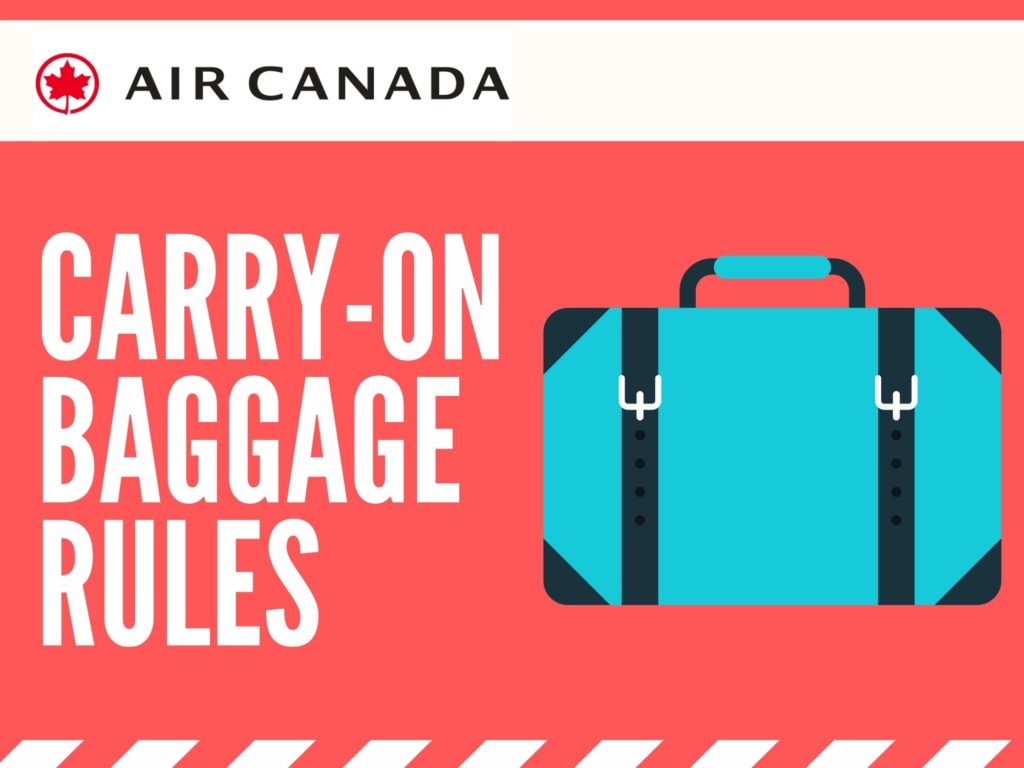


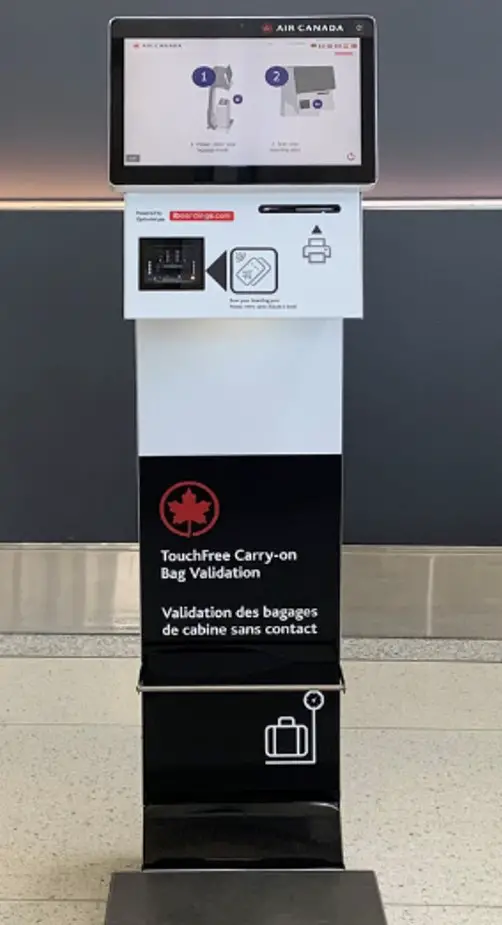

 “Go Hilton” Employee, Family & Friends Rate: How to Save 75%
“Go Hilton” Employee, Family & Friends Rate: How to Save 75%
Can I take my Mac mini m4 and peripherals in my carry on.
yes. there should be no issues with bringing a Mac mini on board
I have a trumpet with case to take from Moncton to Fort Lauderdale. what is this classed as??
I am flying Air Canada from Toronto to Vancouver, and then to Anchorage.
Can I put my camera in my backpack…..and I will also have a small cross body purse for my passport and wallet. Is this okay?
Hi Lynda – Yes. You can put your camera in your backpack. In this case, your backpack will be your carry on and your cross body purse is your personal item
The link to the travel pro max lite you provided and labeled as recommended for air Canada seems misleading. With wheels, which they count in the dimensions, this suitcase is 23”. While the case is 21”, with wheels would not qualify. Correct?
Hi Jen – You are correct about the wheels adding a few inches but I have flown Air Canada with this bag and not had a problem. If you are concerned, Travel Pro has a similar “global size” bag that is just a little bit smaller. Here is a link:
https://www.amazon.com/dp/B07QXD3J9G?
Hope this helps!